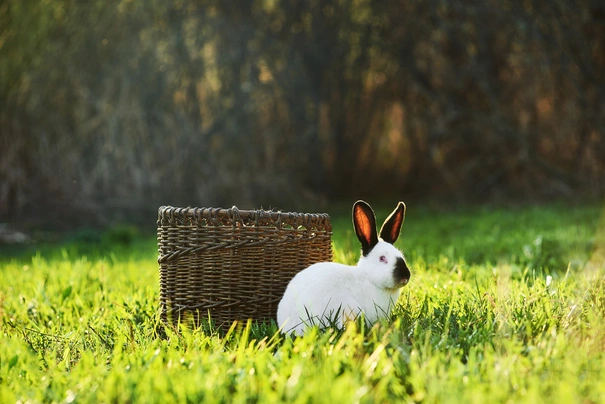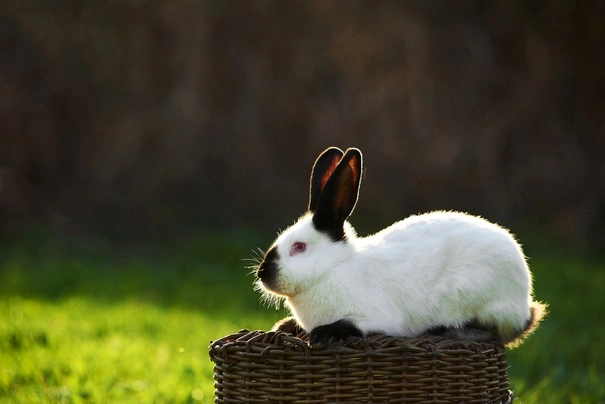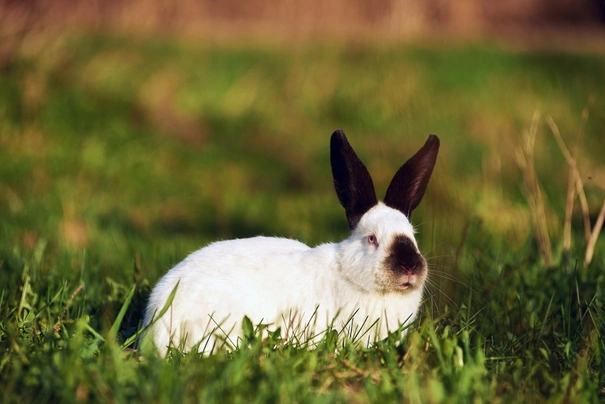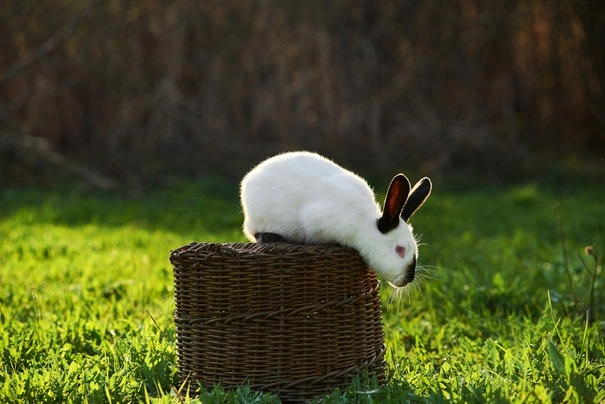Pets
Pets for studWanted petsBreedersAccessories & services
Knowledge hub
Support
Support & safety portalCalifornian
Introduction of the Californian
Developed in Southern California in the early part of the 1920s, the Californian Rabbit is a medium to large sized domestic animal that’s the result of crossing a Himalayan with a Chinchilla, before putting the resulting kits to a New Zealand White. Breeder George West was looking for an animal that had good meat coverage as well as a high-quality pelt.
The Californian initially failed to arouse interest in American fanciers and it wasn’t until the 1930s that the breed became popular. Today the Californian is one of the most popular meat rabbits in the world and its coat means it is classed as a fancy breed.
History of the Californian
A medium to large rabbit, the Californian was originally developed by George West in Southern California as a meat and fur animal. The country was experiencing a boom in rabbit breeding to meet the needs of a hungry population, and the Californian was intended to help satisfy this growing demand for food.
By putting together a Himalayan and a standard Chinchilla, West was part-way to achieving his goal. By breeding the resulting animal with a New Zealand he finally realised his ambition of creating a new rabbit that had excellent muscle cover and a lovely, silky soft coat.
As already mentioned, it wasn’t until mid-way through the 30s that the breed finally gained in popularity and it is now the second most popular meat breed behind the New Zealand. It’s also a popular pet and show rabbit, where it sits in the fancy classes thanks to its lustrous fur.
Appearance of the Californian
- Main colourways: white with very dark brown markings on nose, tail, feet and ears.
- Average weight: 3.5 – 4.75kg
The Californian rabbit has large ears – almost as large as the Flemish Giant, which are held erect, and is a moderate to large sized animal, weighing in at around 3.5 – 4.75kg (7-12lbs). The coat is soft and silky and is white, with dark brown almost black markings on the ears, tail, nose and feet. This unusual colouring makes the Californian look very much like its Himalayan ancestors.
The breed is well-rounded and compact, with a very short neck. It’s well muscled, plump and firm. The nose markings continue below the jaw and up towards the eyes, while the leg markings run well up the limbs towards the body and the nails and feet are dark. The ears are dark from base to tip and the tail is also a dark chocolate brown.
As it’s a predominantly white animal, the Californian has striking pink eyes.
Temperament of the Californian
The Californian is a calm, friendly and good-natured animal that makes a great pet. They can occasionally be timid and sensitive, but with careful handling and encouragement they can learn to settle in human company.
Generally speaking though, the Californian is a calm, even-tempered rabbit that enjoys playtime and exploring. It’s important to remember though, that as a prey animal, any rabbit can be skittish and can display fear. Any handler should learn how to pick up and hold a rabbit correctly as, if the rabbit feels unsafe or is uncomfortable, he will struggle. Rabbits are much stronger than they appear and have powerful hind legs. If they struggle while being held they can cause injury to themselves or their handler.
Health of the Californian
As a breed that was originally developed in warmer climes, the Californian is known for not thriving in cooler temperatures. If you choose to give a home to a Californian Rabbit, it would be wise to allow him to live indoors. The Californian can also develop sore hocks if it is housed in a cage with a wire floor. It’s best to offer any rabbit living quarters with solid floors to avoid this problem.
Although it’s generally a healthy breed that’s not plagued with medical problems, there are a few issues that can affect any rabbit and your pet must be monitored closely for these. As a rodent, the teeth of a rabbit grow continually and can cause injuries in the mouth or problems with eating if they’re allowed to get too long. Your rabbits should be fed a diet high in roughage – good quality hay and fibrous green vegetables like cabbage and kale – in order to keep the teeth worn down. Visual checks of the teeth should also be made regularly and overgrown molars or enamel spurs should be treated by a vet.
Many rabbits can develop respiratory problems – particularly if they are housed in a dirty or dusty environment without access to adequate ventilation or fresh air. This can be a problem with shed-kept animals that aren’t cleaned out regularly. Overweight animals can be prone to flystrike, where flies lay their eggs in the soiled areas of the coat of a rabbit that has difficulty grooming. The hatched larvae will burrow into the skin of the animal and cause open wounds and great discomfort.
All rabbits should be treated for fleas, ticks and worms and should be vaccinated against myxomatosis and Viral Haemorrhagic Disease. Non-breeding does should be spayed to prevent uterine cancer.
Caring for the Californian
Whether your rabbit is kept in the house or in a hutch or shed outdoors, he should be kept out of draughts or direct wind as these can also contribute to respiratory problems. They should be protected from the worst of the weather, but should have secure access to the outdoors so they can satisfy their natural instincts to graze and explore. He will appreciate a collection of toys to play with and rabbits seem to prefer cat or small dog toys with bells, rattles and squeakers.
As a social mammal, he’ll probably also appreciate a friend to keep him company. Two neutered males or a neutered male and a female will get on best. He shouldn’t be housed with a guinea pig as he could cause injury to the smaller animal.
Any living area should be cleaned out regularly and he should also be provided with a nesting area where he can retire for complete peace and quiet. He must be fed a high quality, high-fibre diet that consists of hay, pellets and green vegetables and leaves, and he must always have access to fresh, clean drinking water.
Related adverts
See all



